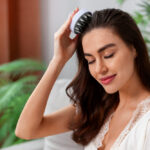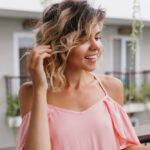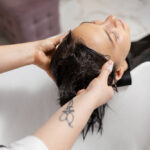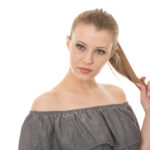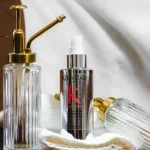The no-poo hair care method, also known as the no-shampoo method, has gained popularity among those seeking a more natural approach to hair care. But is it the right choice for you?
At the core, no-poo is simple, but a radical idea: ditch your traditional shampoo altogether and allow your scalp’s natural oils to maintain your hair’s health and cleanliness.
For many, this approach is a refreshing alternative to using harsh and chemical-laden shampoos. But while it sounds like a dream come true, it does not come without its complexities.
It can lead to impressive benefits, but it also comes with challenges and pitfalls that may leave you feeling frustrated or uncertain about whether it’s right for you. Here at Haste, we want to explore the good, the bad, and the ugly of shampoo-free styling with you.
The Good: Why No-Poo Hair Care Can Be a Game-Changer for Your Hair

1. Healthier Scalp and Hair
When holding a traditional shampoo in your hand, you often find sulfates and detergents designed to remove oil and dirt. While this can make your hair feel clean, it can strip away natural oils (sebum) that protect and nourish your scalp and hair shaft.
The no-poo method allows your scalp to maintain its natural oil balance, which can:
- Prevent dryness and flakiness.
- Reduce scalp irritation and inflammation.
- Encourage natural shine and softness.
- Improve overall hair strength by preserving the hair’s natural moisture barrier.
2. Environmental and Financial Benefits
When you skip shampooing your hair, it reduces plastic waste, limits the release of synthetic chemicals into waterways, and saves you money on hair care products. For eco-conscious consumers, no-shampoo offers a sustainable alternative that aligns with green living.
3. Simplified Hair Care Routine
Another benefit is that you won’t have to stress about which shampoo brand to buy or decipher complex ingredient labels. Many people find that no-shampooing simplifies their hair care, requiring only water rinses, occasional natural cleansers like apple cider vinegar or baking soda, or gentle conditioners.
4. Reduced Color Fading and Heat Damage
If you have color-treated hair, shampoo can cause the color to fade more quickly. No-poo routines often help preserve hair color longer by avoiding harsh detergents. Additionally, healthier hair can tolerate less heat styling damage.
The Bad: Common Challenges and Adjustments You’ll Face

1. The “Transition Period” Is Real
When you stop using shampoo, your scalp might overproduce oil as it “learns” to self-regulate.
This often results in:
- Greasy or heavy-feeling hair.
- Itchiness or discomfort.
- An adjustment period that can last from a couple of weeks up to 2 months.
This phase can be challenging, but it often resolves as the scalp adapts.
2. Build-Up Can Occur
Without regular shampoo cleansing, buildup of sweat, sebum, dirt, and styling products can accumulate, leading to:
- Dull, weighed-down hair.
- Possible unpleasant odors.
- It may require alternative cleansing methods, such as water-only rinses, clay masks, or the occasional use of mild cleansers.
3. Not One-Size-Fits-All
Hair texture, scalp type, lifestyle, and environmental factors all influence how well no-poo hair care works. For example:
- Those with oily scalps may feel greasy sooner.
- Active individuals or those exposed to pollution may need more frequent cleansing.
- Fine or limp hair may lack volume even with traditional shampoos.
4. Requires More Time and Experimentation
No-poo isn’t just about stopping shampooing. It often requires learning new techniques, trying natural alternatives, and adjusting routines, which may take time to perfect.
The Ugly: Potential Downsides and Cautions
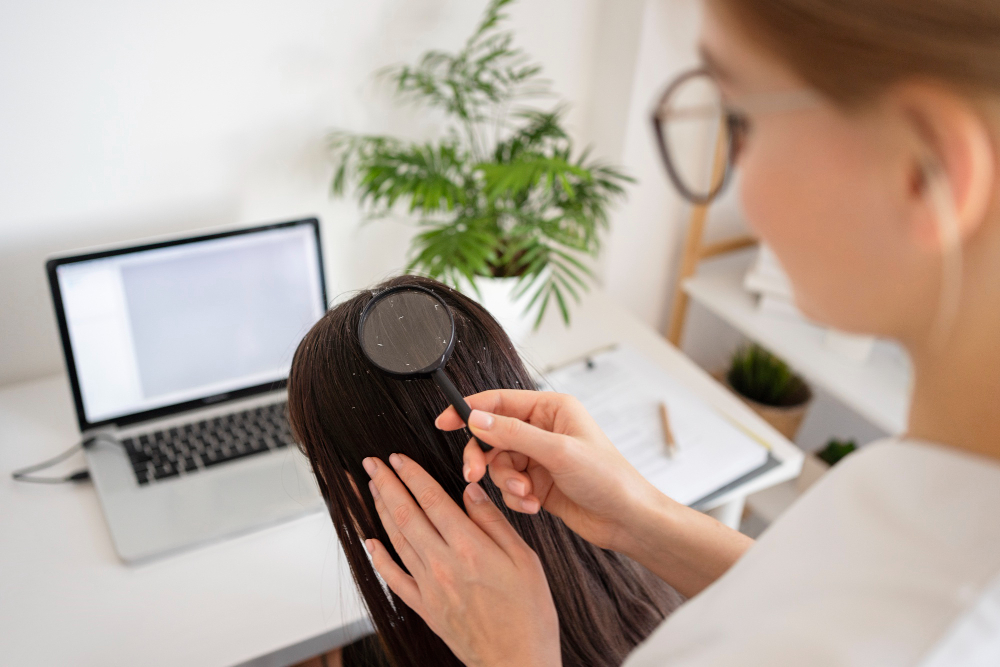
When you follow a no-poo regimen, avoiding shampoo can lead to persistent scalp issues if you’re prone to dandruff, seborrheic dermatitis, or fungal infections, as regular cleansing helps prevent these problems.
Additionally, the perception of shampoo-free hair can carry social stigma, being viewed as unprofessional or unclean, which may impact social interactions and workplace dynamics. The no-poo hair care approach also limits compatibility with conventional styling products that require clean hair, often necessitating a switch to natural alternatives.
Finally, if you have a busy lifestyle or exercise frequently, maintaining a no-poo regimen can be impractical, as hair can quickly accumulate sweat and odors without regular washing.
Comparison Table: The Good, The Bad, and The Ugly of No-Poo
| Aspect | The Good | The Bad | The Ugly |
| Scalp Health | Maintains natural oils; less irritation | The initial oily phase during transition | Possible worsening of scalp conditions |
| Hair Quality | Shinier, stronger, less damage | Product buildup causing dullness | Some hair types may struggle (fine/oily) |
| Routine & Convenience | Simplifies care; fewer products needed | Requires trial, error, and patience | May not fit busy or active lifestyles |
| Environmental Impact | Eco-friendly; reduces chemical pollution | None significant | None significant |
| Cost | Saves money on shampoo and chemical products | May require alternative cleansers | Possible expense on specialized natural products |
| Social Perception | Embraces natural beauty | May attract curiosity or skepticism | Risk of negative judgment in professional/social settings |
| Styling Options | Hair is healthier for natural styles | Some styling products are less effective | Limited product compatibility |
How to Start a No-Shampoo Routine
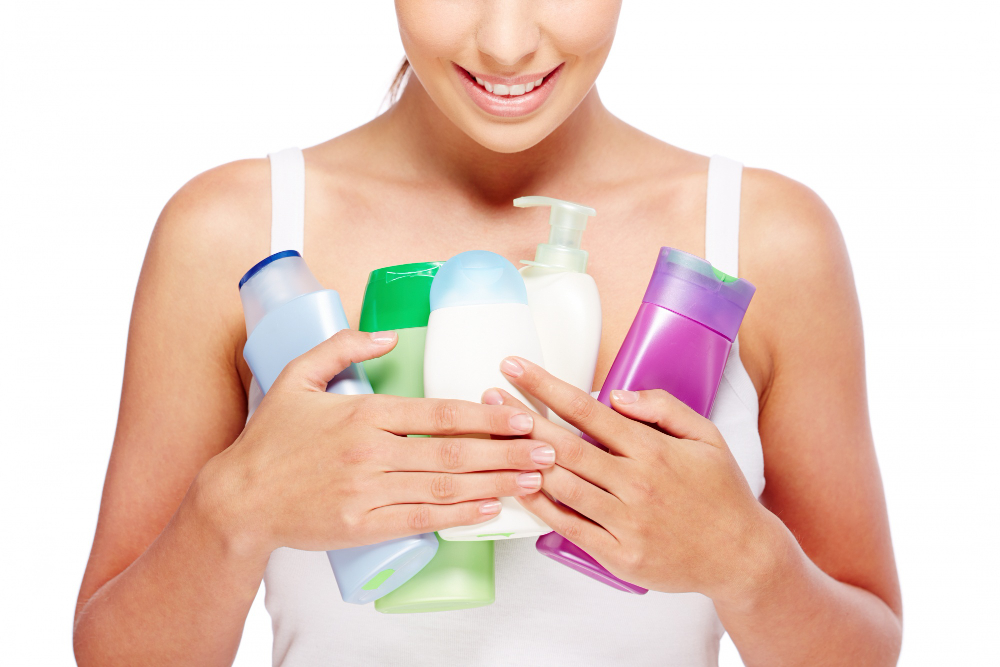
So you’re thinking of ditching your shampoo? Transitioning to a no-poo hair care routine doesn’t have to be difficult. Here’s how to start strong and avoid common mistakes:
Understand Your Hair Type
Before making any changes, get to know your hair and scalp:
- Oily scalp: You may need to rinse more frequently or use a transition cleanser.
- Dry or curly hair: No-poo hair care may be a good option, as shampoo can often strip away needed moisture.
- Fine hair: You may need to adjust the method to prevent flatness.
Choose a No-Shampoo Method
There are several ways to go, depending on your preferences:
- Water-only washing (WOW): Simply use warm water to massage the scalp and rinse thoroughly.
- Co-washing (Conditioner Only): Use a lightweight, silicone-free conditioner to cleanse and hydrate your hair gently.
- Baking soda & apple cider vinegar (ACV): A popular combo, though controversial—baking soda can be too alkaline for long-term use.
- Clay masks or herbal rinses: Rhassoul clay, bentonite clay, or herbs like shikakai and amla are gentle, effective natural cleansers.
Prepare for the Transition Period
Expect 2–6 weeks of adjustment. Your scalp may produce excessive oil, and your hair may feel greasy, flat, or dull. This is normal.
- Use dry shampoo alternatives, such as arrowroot powder or cornstarch, to achieve a similar effect.
- Brush regularly (boar bristle brushes help distribute natural oils).
- Stick with it — the benefits come with time and consistency.
Rinse and Massage Regularly
Whether you’re using water-only or an alternative rinse, spend time massaging your scalp to loosen buildup and stimulate circulation.
Track Your Progress
Keep a journal or take pictures to track changes. Adjust frequency and methods as needed. Everyone’s no-poo routine is unique.
Natural Alternatives to Shampoo: What to Use Instead

You don’t need store-bought shampoo to keep your hair fresh and clean. Here are some no-poo-friendly options you can explore:
| Alternative | Best For | How to Use |
| Water-only washing | Dry, curly, or textured hair | Use warm water; scrub scalp with fingertips for 3–5 minutes, then rinse. |
| Co-washing | Thick, dry, or color-treated hair | Use a silicone-free conditioner. Focus on the scalp, then rinse thoroughly. |
| Baking soda + ACV | Short-term cleansing or detox | Mix one tablespoon of baking soda with water, then scrub your scalp; follow with a diluted ACV rinse. |
| Clay (Rhassoul, Bentonite) | Oily or buildup-prone scalps | Mix with water to form a paste, then apply to the scalp, massage, and rinse. |
| Herbal rinses | Sensitive scalps or those with dandruff | Brew herbs (like chamomile, nettle, or rosemary), let cool, then pour over hair. |
| Aloe vera gel | Irritated or itchy scalps | Use fresh gel on your scalp; leave it on for 10–15 minutes before rinsing. |
Tip: Always follow up with a cool water rinse to seal the cuticle and enhance shine.
Wrap-Up: Customize, Don’t Compromise
Starting your no-poo hair care journey is all about personal experimentation. There’s no single “right” way to go no-poo; it’s about finding what works best for your hair. At Haste Hair, we believe healthy hair begins with listening to your scalp, respecting your natural texture, and choosing routines that feel good to you.
FAQ
What does no-poo hair care mean?
No-poo refers to hair care routines that eliminate the use of shampoos. Instead, you use alternatives like water-only washing, conditioner-only cleansing, or natural rinses to clean your hair and scalp.
Will my hair look greasy when I stop using shampoo?
Yes, at first, your hair may look greasy during the transition period as your scalp adjusts to producing a balanced amount of oil. But with time, regular rinsing, brushing, and patience, it will start to regulate itself.
Can I still use styling products with no-shampooing?
You can, but choose natural, water-soluble products where possible, as traditional styling products like gels can cause a scalp buildup and are difficult to remove without using shampoo.
Can I do a no-poo in between my regular shampooing?
Yes, you can follow a no-poo routine between regular shampooing, as it extends washing times, reduces scalp oil production over time, and improves your hair’s moisture and texture.



